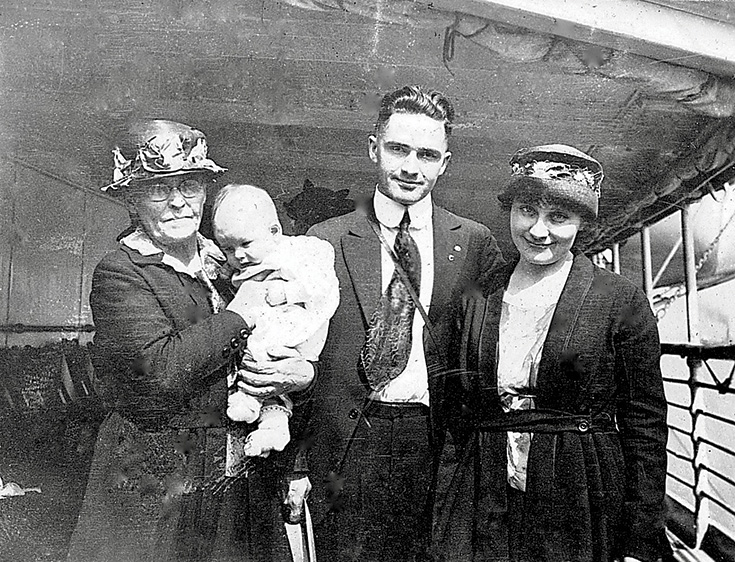
One mission launched by J. Russell and Gertrude Morse nearly 100 years ago produced several global movements that have impacted millions. Today, third- and fourth-generation members continue to serve as missionaries. Here’s the story—in words and pictures—of those involved through the years.
By Ziden L. Nutt
The last trunk had been lowered into the hold of the ship. The gangplank was withdrawn. The engines throbbed and quivered. The Empress of Japan seemed to shudder as it swung away from the pier on August 13, 1921. Among those on board were Dr. and Mrs. Albert Shelton and J. Russell and Gertrude Morse with their 4-month old son, Eugene. They were “going for life” to proclaim the gospel of Christ to the peoples of China and Tibet (photo above).
All of this was no surprise to the mother watching the departing ship, for she had long prayed for this day. Ruth Morse married young and had four children, none of whom seemed interested in being a missionary. She wrote on February 4, 1898, “I wished I could be a missionary, but I couldn’t leave my family. So, I asked God to send me a child that would be a missionary. God heard my heart cry and sent me the sweetest baby boy—Justin Russell Morse.”
Dr. Shelton had been on a furlough from Tibet when he stopped at Enid, Oklahoma, to visit his parents and speak at Phillips University. He made the appeal, “Have we in this audience a young husband and wife willing to work with me in the task of opening Tibet for Christ?” J. Russell glanced sideways at his young bride, Gertrude, who was already looking at him with a smile. They both knew instantly this was a call on their lives.
This began a legacy of inspiration and faithfulness that has impacted millions around the world and that people continue to celebrate 100 years later. Many more became part of this great venture and legacy, including third- and fourth-generation members of the Morse family who today are still serving as missionaries. What began with this mission became a movement among local tribes that literally expanded around the world.
Others had gone to the great mission field of China prior to them, including Dr. W. E. Macklin of Canada in 1886, E. T. Williams and F. E. Meigs in 1887, Dr. James Butchart in 1891, and Petrus Rijnhart the next year. They represented the Christ of the cross who “came not to be served but to serve.” Dr. Susie Carson Rijnhart and Dr. Albert Shelton went in 1904. The annals of mission history also point out the sacrificial service of Dr. Z. S. Loftis in 1909 and Dr. W. M. Hardy in 1910.
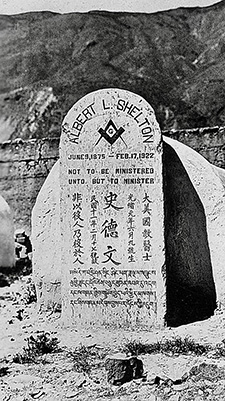
The Trials of the Early Years
After four months of grueling travel, the Shelton and Morse families arrived in Batang on the China-Tibetan border on December 23, 1921. Unfortunately, only a short time after their arrival, Dr. Shelton was robbed and murdered by the very people he had gone to serve. When Dr. Norton Bare and his wife, Lois, learned of Dr. Shelton’s death, they stepped up to serve, arriving in 1925.
These early missionaries grappled with travel and tragedy (see photo), troubles and trials, and they struggled against liberalism in the mission society they were under. The society had become controlling, while also slowly departing from the principles, doctrines, and authority of God’s Word.

The Morse family took a stand and resigned from the society in 1926, as did Leslie and Carrie Wolfe in the Philippines, Sterling and Zoena Rothermel in India, and Milton and Maude Madden and William and Emily Cunningham in Japan. This began a global movement toward “direct-support missions” which was “independent” of any society. Such missionaries receive direct support from churches and individuals; this model continues today among hundreds serving across the Americas and around the world.
This model follows Acts 13:2-3, where “after they [the church at Antioch] had fasted and prayed, they placed their hands on them and sent them off.” Through the years, when direct-support missionaries take breaks from the grueling work in their fields of service, they return to the churches from which they “had been recommended to the grace of God for the work which they fulfilled. And . . . they rehearsed all that God had done with them” (Acts 14:26-27, King James Version).
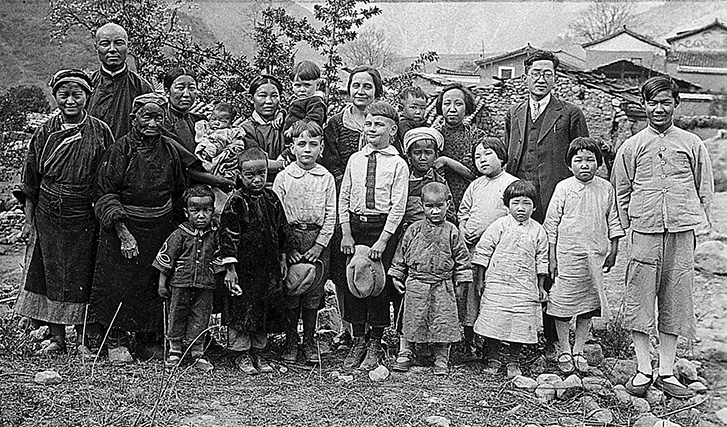
The Yunnan-Tibetan Christian Mission was soon formed by the families who sacrificially served with their children in that great harvest field of the world (photo above). Other courageous men and women became co-workers in a unified effort. Great were the sacrifices made by those who counted the cost and joined this mission. The love of Christ and for Christ burned deeply within them, and their passion for sharing that love led them to join this mission.
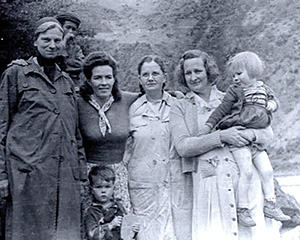
Vernon and Mona Newland went in 1934. Harold and Ada Taylor and Isabel Maxey went in 1937. Edgar and Mabel Nichols, Gladys Schwake, and Melba Palmer arrived in 1938 (photo at left). By special arrangement, the U.S. Army flew nurse Dorothy Sterling in to join the mission in 1944.
A Mission on the Move
World War II caused dramatic changes that temporarily led some missionaries back to the United States and to other places, but God’s people were on the move. Isabel Maxey had briefly returned to the U.S., married Warren Dittemore, and returned to China in 1946. Mr. and Mrs. Ellis Back arrived in 1947. David Rees, Jane Kinnett, William Rees, Imogene Williams, and Mel Byers went in 1948.

J. Russell and Gertrude Morses’ two older sons and the sons’ wives—Eugene and Helen, Robert and Betty—returned as adult missionaries in 1948, while son LaVerne returned to China in 1949 (photo at right). C.W. and Lois Callaway and Laura Banks also went in 1949. Little did they know that their time of service in China was coming to an end. Communist troops soon would be coming through the area and forcing the evacuation of all mission workers.
This resulted in the Yunnan-Tibetan Christian Mission truly becoming a global movement as missionaries who worked there “scattered” to other places around the world (below left). Their passion for sharing Christ took Jane Kinnett and the Taylors to Korea, Edgar Nichols and Phillip Ho across “The Hump” to India, and the Newlands to the Philippines only to be imprisoned for 37 months during the Japanese occupation. Byers, Williams, and the Callaways went to Thailand, Dittemore to Japan and Taiwan, Bill and Melba Rees to South Africa. Dorothy Sterling went to Burma (below right) and then on to Thailand, where she worked among the Lisu people until her death on November 4, 1972. Garland Bare, who was born in China, and his wife, Dorothy, went to Thailand as missionaries in 1951.
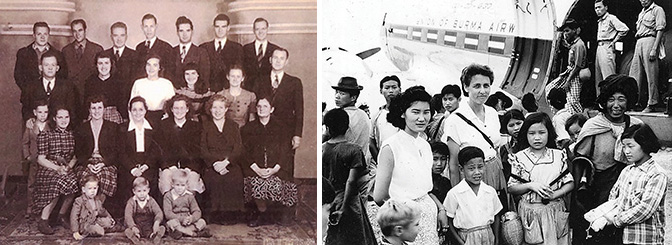
These were exciting days of church expansion when thousands of tribal people found the joy of salvation in Christ. The same evangelistic passion that had brought these workers to this remote area of the China-Tibetan border had now driven them to reach out to peoples in regions beyond.
On December 7, 1949, J. Russell Morse sent Gertrude and Drema Esther to Hong Kong, away from impending danger while he remained behind in China. He was quickly put under house arrest, and on March 22, 1951, he was taken to prison. More than a year later, without explanation, the prison guards told J. Russell to get dressed. Communist guards escorted him by train and boat to the “bamboo curtain” where he was released on June 20, 1952. He was then told to cross over alone to the Hong Kong border. He made his way to a hotel and phoned Howard Phillips, who took him to an “answer-to-prayer” reunion with Gertrude and LaVerne. (Wife and son were on their way to the United States from Burma and had stopped in Hong Kong on their way.)
Not knowing what had happened to J. Russell, the family had decided to relocate the mission base to the Putao area of north Burma in 1950. Thousands of Lisu refugees from China were moving into that area. Much work was done to help lay out villages and prepare fields for some 20,000 Lisu and Rawang people who moved from the mountainous regions to establish themselves in the Putao plains. J. Russell and Gertrude Morse—undeterred by previous hardships—returned to Burma in July 1953. After LaVerne Morse’s marriage to Lois Elliott on March 27, 1953, he returned with Lois to Burma in 1954.

The gospel was shared with the Lisu and Rawang people and churches were established. Citrus groves were planted, a clinic was opened, and a full-time Bible school was started. Gertrude traveled many miles to teach in mountain villages (photo at right).
This movement of God among the people in the Putao plains led to 46 churches being established among the Lisu and 30 churches among the Rawang people. Over the years, the gospel was taken by local evangelists to other areas of Burma and India; a number of people groups were reached and more than 500 churches established.
New Chapters, New Opportunities
The name of the mission was officially changed to North Burma Christian Mission on February 1, 1954. LaVerne later established contacts with the Lisu in Thailand, India, and other parts of Asia, and formed his own mission, Asia Christian Services, to meet the needs in those areas (photo below).
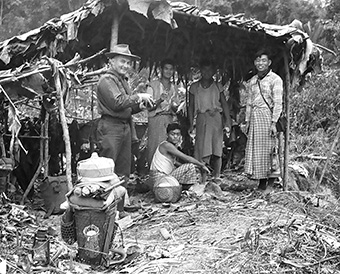
Martyrdom, persecution, wars, imprisonment, and other factors led to unanticipated opportunities and outreach. It was much like the first century when “a great persecution broke out against the church,” and, as the Bible says, “those who had been scattered preached the word wherever they went” (Acts 8:1-4). In hindsight, it is thrilling to see how God was orchestrating cooperative partnerships that brought glory and honor to his name among many nations.
In 1965, the socialist government of Burma ordered all foreigners to leave. Unable to leave by air as planned, the Morse families silently slipped away one night and traveled overland to the Indian border. The demarcations of the area were uncertain, but it became known as “the Hidden Valley,” where they remained for six and a half years, returning to the United States in August 1972.
In June 1973, Eugene and Robert Morse, each accompanied by two of their sons, traveled to Thailand to start a new chapter of the North Burma Christian Mission work, focusing again on the Lisu tribe. Some of the missionaries from China and Tibet had formed mission groups and were already faithfully serving in Thailand. These included Mel Byers, the Callaways, David and Deloris Filbeck, Dorothy Uhlig, Imogene Williams, Dorothy Sterling, and others. At this same time, Jesse and Drema Yangmi, after forming Asia Christian Mission, also joined the intense efforts of outreach to the Lisu, Lahu, and Akha. Later, Alan and Janet Bemo (daughter of Warren and Isabel Dittemore) came to serve in Thailand, and then on to Laos.

Still Serving
Now, a century after it started, third- and fourth-generation members of the J. Russell and Gertrude Morse family are still serving in Thailand, as well as reaching back into Burma and other nations to help strengthen the churches there. Those serving today include children and grandchildren of Eugene and Helen: David and Norma Morse, Tom and Debbie Morse, Ron and Patrizia Morse, Jeannette and Walter Ridgley, and Marilyn and Joel Khopang. Children of Robert and Betty still serving on the field include Jonathan and Nangsar Morse, and Bobby and Tassanee Morse. Of the fourth generation, Tom and Debbie’s daughter, Angela Morse, has recently begun working on the field in Thailand. Other family members are actively involved in various mission works from the U.S.
Through the years, other faithful servants of God joined the team, including Tom and Gayle Silkwood, Dewayne and Jackie Liebrandt, Joel and Kelly Lillie, Derry and Angela Gambill, Jeff and Mary Silkwood, and others.
The areas of ministry include evangelism and church planting, Bible translation, Christian literature production, Bible schools, audio-visual media, agriculture, children’s hostels, and ministry to the deaf. All these areas of ministry have the shared goal of fulfilling the Great Commission to “disciple the nations.”
North Burma Christian Mission and its partners continue to make a vital impact for the gospel of Christ. They are pleased to sponsor events celebrating a century since the beginning of a mission that became a movement. A celebration is planned in Thailand this fall and at the International Conference On Missions in Columbus, Ohio, in 2022.
Ziden and Helen Nutt moved to Zimbabwe, Africa, in 1961 where they founded Chidamoyo Christian Mission and Good News Productions. In 1975, their family returned to the United States to expand GNP to an international ministry with nine global centers serving evangelistic efforts around the world.

It was Mission Emphasis Week, about 1961 at the Cincinnati Bible Seminary (later known as Cincinnati Bible College and Seminary, and still later as Cincinnati Christian University) and our chapel was off-campus, about half a mile away. We carpooled there and back, and I was sitting in the back seat with J. Russell Morse and someone else. I remember he talked about returning to Burma, not expecting to ever return to the States. He did later return. I knew his sons, especially LaVerne and [his wife] Lois and their daughter Marsha Odor. Isabel Dittemore was a friend of my mother and stayed in our home at least once. (Her husband, Warren Dittemore, died soon after they first arrived in China.) I helped her with some recording she was doing for radio broadcasts.
My mother subscribed to the Christian Standard for many years and followed the epic story of the Morse family avidly.
One time my paternal grandmother, a devout member of the Seventh Day Church of God, was visiting and read those same articles with great interest. After that she was never critical of our membership in the Christian Church. (To those unacquainted with the Seventh Day Church of God, Grandma seemed to feel her mission in life was to consign the Roman Catholic Church and the major Protestant denominations to damnation. She considered Protestants as mere offspring of Romanism.)
I heard “Daddy” Morse and one or two of his sons at NACC conventions.
In her retirement, Gladys Schwake moved to Hawthorne, California, where she was a hospital nurse and a member of the Lawndale Church of Christ. Sadly, it appears she was safer on the mission field than in the USA; one night she was injured when her purse was snatched as she was going home from the hospital.